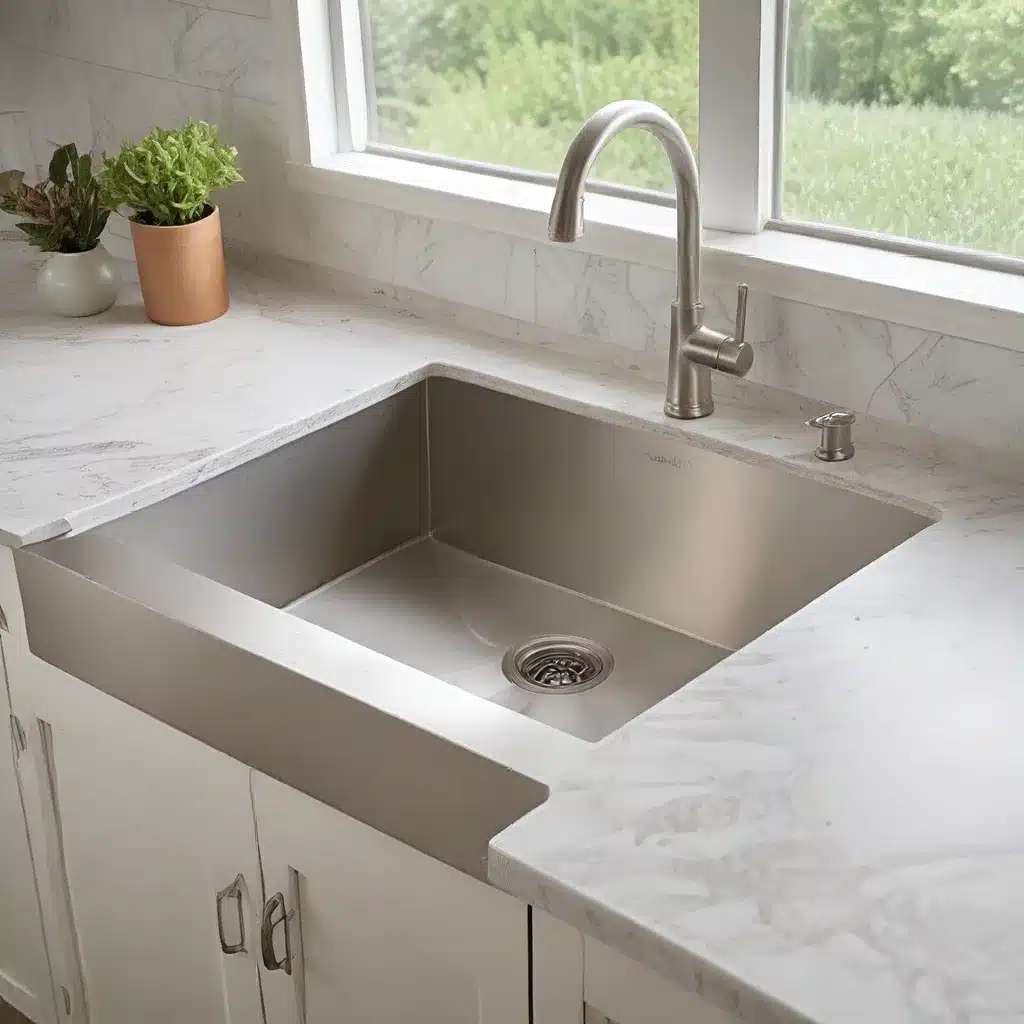
When it comes to creating a harmonious and functional bathroom, the humble washbasin or sink plays a pivotal role. More than just a utilitarian fixture, the sink is a centerpiece that can elevate the entire aesthetic of the space. Whether you’re a homeowner seeking a personal touch or a designer aiming to deliver a cohesive vision, understanding the intricacies of sink selection and installation is crucial.
Choosing the Right Sink: Materials and Styles
The foundation of a well-designed bathroom starts with the sink. From sleek and modern to timeless and traditional, the variety of sink styles available can be overwhelming. However, by considering your personal preferences, the overall design aesthetic, and practical considerations, you can find the perfect sink to suit your needs.
Porcelain sinks have long been a popular choice, offering a classic and durable option. Their smooth, non-porous surface is easy to clean and maintain, making them a practical choice for high-traffic bathrooms. Ceramic sinks, on the other hand, offer a more delicate and artisanal look, with a wide range of glazed finishes to complement various design styles.
For a contemporary, minimalist vibe, stainless steel sinks are a fantastic option. Their clean lines and shiny, metallic finish lend themselves well to modern and industrial-inspired bathrooms. Granite and quartz sinks, with their natural stone patterns and durability, are also gaining popularity, offering a luxurious and long-lasting solution.
When it comes to sink styles, the options are endless. Undermount sinks, which are installed beneath the countertop, provide a seamless, streamlined look. Drop-in sinks, on the other hand, sit atop the countertop, offering a more traditional aesthetic. Vessel sinks, with their above-counter design, can create a striking focal point in the bathroom, while pedestal sinks are a classic choice for smaller spaces.
Mastering the Installation Process
Once you’ve selected the perfect sink for your bathroom, the installation process is the next critical step. Proper installation is essential for ensuring the long-term functionality and aesthetics of your washbasin.
Washbasin Factory recommends working with experienced professionals to ensure a seamless installation process. These experts can guide you through the necessary steps, from preparing the countertop or vanity to securing the sink and connecting the plumbing.
One crucial aspect of sink installation is ensuring a proper seal between the sink and the countertop or vanity. Failing to create a tight seal can lead to leaks, water damage, and even mold growth over time. Silicone caulk or specialized sink clips are often used to achieve a secure and watertight connection.
Another important consideration is the type of countertop material. Different materials, such as granite, quartz, or laminate, may require specific installation techniques to ensure a seamless fit and long-lasting performance. Undermount sinks, in particular, require precise measurements and careful installation to achieve a flawless appearance.
Maintaining the Beauty and Function of Your Sink
Once your sink is installed, proper maintenance is key to preserving its appearance and functionality for years to come. Regular cleaning with a mild, non-abrasive cleanser can help prevent the buildup of hard water stains, soap scum, and other grime.
For stubborn stains or discoloration, a gentle sink cleaner or a mixture of baking soda and water can be an effective solution. It’s important to avoid harsh chemicals or abrasive scrubbers, as they can damage the delicate finishes of some sink materials.
In addition to cleaning, it’s crucial to address any leaks or water damage promptly. Ignoring these issues can lead to more significant problems, such as mold growth or structural damage. If you notice any signs of a leak, it’s best to contact a professional plumber or sink installation expert to diagnose and resolve the issue.
Trend Spotting: Emerging Sink Designs and Features
As the bathroom industry continues to evolve, sink design trends are also constantly shifting. Some of the latest innovations include touch-free faucets, integrated soap dispensers, and smart features that allow for remote control and water conservation.
Undermount sinks with seamless countertop integration are becoming increasingly popular, offering a sleek and minimalist aesthetic. Vessel sinks, with their distinctive raised design, continue to be a sought-after option for those seeking a statement piece in their bathroom.
Sustainability and environmental consciousness have also influenced sink trends, with eco-friendly materials like recycled glass and bamboo gaining traction. These options not only contribute to a greener bathroom but also introduce unique textures and visual interest.
Whether you’re renovating an existing bathroom or designing a new one, understanding the latest sink trends and technologies can help you make informed decisions that cater to your personal style and practical needs. By collaborating with experienced professionals and staying up-to-date with industry developments, you can create a washbasin that is both functional and aesthetically pleasing.
Conclusion
The washbasin or sink is the unsung hero of the bathroom, serving as both a practical fixture and a crucial design element. By carefully considering the material, style, and installation process, you can transform your bathroom into a harmonious and personalized oasis.
Remember, the key to a successful sink installation lies in working with knowledgeable professionals, understanding the unique needs of your space, and staying up-to-date with the latest trends and innovations. With these tips in mind, you can create a washbasin that not only meets your functional requirements but also elevates the overall aesthetic of your bathroom.
Embark on your sink customization journey and discover the perfect balance of form and function that will bring your bathroom dreams to life.